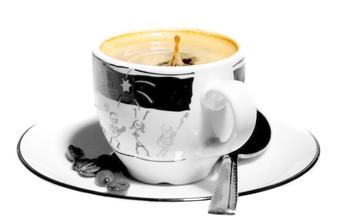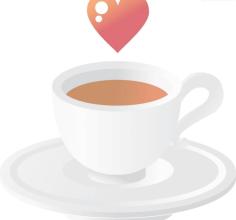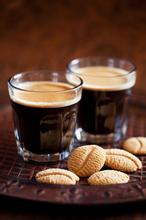Introduction of Burundian boutique coffee bean flavor and taste manor producing area
There are many problems in the economic and social development of Burundi. Among them, first, due to the limited betrothal price in the country, the smooth implementation of the development plan for Burundi depends to a large extent on external support; second, due to the lack of high-quality personnel and necessary equipment, administrative efficiency is still underground; third, the market lacks transparency; fourth, there are not many commodities available for export; fifth, the infrastructure is backward, social services are poor and the market is small; and sixth, the unemployment problem is serious.
The main export products are coffee, tea, cotton, leather and so on, while imports are industrial raw materials, machinery and equipment and consumer goods. The largest trading partner is the European Community. The main targets are Belgium, Germany, France, the United Kingdom, the United States and Japan. Foreign aid mainly comes from Belgium, France, Germany, as well as the European Community and United Nations agencies. 2011 main economic indicators GDP $1.6 billion currency name Burundian franc (Brown) per capita GDP $1 = 1261 Brown economic growth rate 4 per cent inflation 9.7 per cent Burundi banking sector
Under the provisions of the Burundian Central Bank Act and the Banking Supervision Act, Burundian banks and financial institutions are under the unified leadership of the Burundian Ministry of Finance. The Bank of the Republic of Burundi exercises the function of the central bank, advances money to the national treasury, sets the official exchange rate and issues currency under the guidance of the government, determines the maximum amount of loans and manages foreign exchange, etc.
There are different flavors of coffee, so you can't drink three or four cups in a row like tea or cola, but the formal coffee cup is the best. Ordinary coffee to 80-100cc for the right amount, sometimes if you want to drink three or four cups in a row, then it is necessary to dilute the concentration of coffee, or add a lot of milk, but still take into account the degree of physical needs, to add or reduce the concentration of coffee, that is, do not cause greasy or nauseous feeling, and in the allocation of sugar might as well be more changes to make the coffee more delicious. Drinking hot coffee is a necessary condition for tasting delicious coffee, even on a hot summer day. Burundian coffee was introduced by Belgian colonists in 1930 and is now grown only on small farms. Unfortunately, many of these farms are on the border with war-torn Rwanda, putting pressure on coffee production. Almost all coffee produced in Burundi is Arabian coffee beans, while coffee trees in Ngozi are planted at an altitude of more than 1200 meters. Burundian coffee has a rich aroma and excellent acidity, and most of its products are exported to the United States, Germany, Finland and Japan, which have been introduced by the Belgian people for a long time. Bloomberg began to grow coffee in 1930. The varieties are mostly bourbon varieties, and coffee grows in mountains ranging from 1750 to 2000 meters above sea level.
The first Burundian Arabica coffee shop was introduced by Billy in the 1930s and continues to this day.
More than 800,000 Bloomberg families live on coffee, and most of them rely on small-scale coffee bars.
The varieties of coffee coffee are mostly Bourbon and Jackson and Mibirigy of the same Bourbon system, and the processing methods are washed and semi-washed.
In the past, most of them were exported to Belgium, Germany, Netherlands, Japan, Australia and the United States.
Coffee export has become an important economic source of Bloomberg, and the country is mainly distinguished from the famous coffee producing areas.

Important Notice :
前街咖啡 FrontStreet Coffee has moved to new addredd:
FrontStreet Coffee Address: 315,Donghua East Road,GuangZhou
Tel:020 38364473
- Prev

Introduction of high-quality coffee beans with flavor and taste in Puerto Rico coffee producing areas
Puerto Rico covers an area of 13790 square kilometers, with mountains and hills accounting for 3x4 of the island. The central mountain range stretches from east to west, stretching from Puerto Rico to Puerto Rico, from high to low, with the coast as a plain. The highest peak, Mount Pengta, is 1338 meters above sea level. Belongs to the tropical rain forest climate, [8] the rainfall is sufficient, the average temperature in January is 24 ℃, the average temperature in July is 27 ℃. Vulnerable to hurricanes
- Next

Introduction to the flavor and taste of high-quality Ecuadorian coffee in high-quality bean producing areas
The Ecuadorian national flag is rectangular, with a ratio of length to width at 2:1. The flag is made up of three rectangles connected by yellow, blue and red. Yellow occupies 1 quarter of the flag, while red and blue each account for 4. The national emblem is painted in the central government. Yellow symbolizes national wealth, sunshine and food; blue symbolizes blue sky, sea and magnificent Amazon; red symbolizes Juan Len Me, the blood of patriots fighting for freedom and justice.
Related
- Detailed explanation of Jadeite planting Land in Panamanian Jadeite Manor introduction to the grading system of Jadeite competitive bidding, Red bid, Green bid and Rose Summer
- Story of Coffee planting in Brenka region of Costa Rica Stonehenge Manor anaerobic heavy honey treatment of flavor mouth
- What's on the barrel of Blue Mountain Coffee beans?
- Can American coffee also pull flowers? How to use hot American style to pull out a good-looking pattern?
- Can you make a cold extract with coffee beans? What is the right proportion for cold-extracted coffee formula?
- Indonesian PWN Gold Mandrine Coffee Origin Features Flavor How to Chong? Mandolin coffee is American.
- A brief introduction to the flavor characteristics of Brazilian yellow bourbon coffee beans
- What is the effect of different water quality on the flavor of cold-extracted coffee? What kind of water is best for brewing coffee?
- Why do you think of Rose Summer whenever you mention Panamanian coffee?
- Introduction to the characteristics of authentic blue mountain coffee bean producing areas? What is the CIB Coffee Authority in Jamaica?

